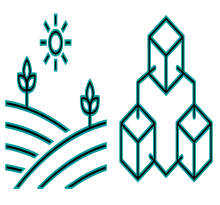
Objectives
The overall objective of the Grasslands RILab is to improve the monitoring of grasslands with products specifically tailored for this ecosystem by combining ground information of biomass, biopars and carbon fluxes with remote sensing and innovation technologies.

Technology / Methodology
- Fuse optical and radar data to improve the temporal resolution of grasslands biophysical parameters estimations (Biopars fPAR and LAI) derived from Sentinel-2.
- Optimise the biopar-data products to the local growing conditions by integrating information from local sensors.
- Evaluate methodologies to estimate grasslands standing biomass and accumulated NPP:
- standing biomass using a ML solution incorporating satellite Biopars, meteorological information, and soil moisture, and
- a biophysically based LUE model

Expected outcome
- Improved time series of grassland Biopars (LAI, fPAR) over 2 contrasting agro-climatic regions in Europe
- Prototype of ML model for estimating grassland standing biomass
- An optimised accumulated grassland biomass (NPP-LUE) model validated in 2 regions, and an upscaling strategy for other areas following interactions with stakeholder networks.
- Improved drought index for grasslands insurance, which EURAC provides to the Provinces of Bolzano/Bozen and Trento, Italy ; and IFAPA/Deimos to the Spanish Insurance System for Agriculture
- Analysis of the potential of grasslands productivity products to provide recommendations on stock density and grazing rotations during one season.

Partners
Lab partners:
- IFAPA
- EURAC
- Deimos
Technology providers:
- Deimos
- VITO
- DHI

Application area
Target crops: Mediterranean and Alpine grasslands
Target areas:
- Mediterranean semi-arid oak savanna (Pedroches region, Spain)
- European Alps (Provinces of Bolzano/Bolzan and Trento, Italy)
